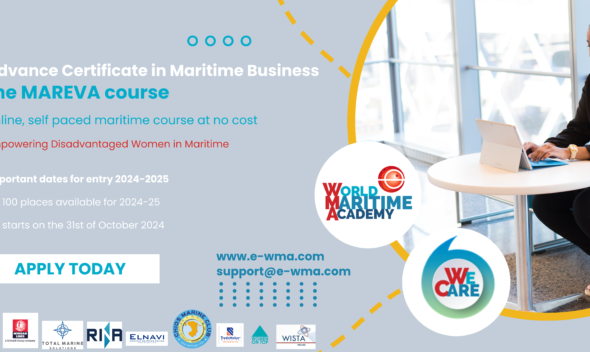Artificial Intelligence (AI) has rapidly become a transformative force in various industries, and maritime operations are no exception. From optimizing routes and fuel consumption to automating navigation and maintenance, AI promises to revolutionize how we conduct maritime activities. However, with great power comes great responsibility. Ensuring the safety and reliability of AI systems in maritime operations is paramount to avoid catastrophic failures that could endanger lives, assets, and the environment. This is where AI safety assurance comes into play.
The Importance of AI in Maritime Operations
Maritime operations are inherently complex, involving numerous variables such as weather conditions, vessel traffic, cargo load, and fuel management. Traditional methods of managing these factors rely heavily on human expertise, which, while valuable, can be prone to errors and inefficiencies. AI offers a solution by analyzing vast amounts of data in real-time, providing actionable insights and automating decision-making processes.
For instance, AI-powered systems can predict equipment failures, optimize fuel consumption, and even assist in navigation through advanced algorithms and machine learning models. Autonomous vessels, which are no longer a distant future concept but an emerging reality, rely on AI to navigate safely through busy shipping lanes and unpredictable oceanic conditions.
What is AI Safety Assurance?
AI safety assurance refers to the process of systematically ensuring that AI systems operate reliably, safely, and within defined parameters. This process involves rigorous testing, validation, and continuous monitoring to mitigate the risks associated with AI deployment in critical operations like maritime activities.
The goal is to establish a framework that guarantees AI systems are not only effective but also safe to use in real-world conditions. This involves understanding and addressing potential failure modes, ensuring the AI’s decision-making process is transparent and interpretable, and continuously updating the system to adapt to new data and evolving operational environments.
Key Elements of AI Safety Assurance in Maritime Operations
- Robust Testing and Validation: Before deploying AI systems on vessels or in port operations, they must undergo extensive testing and validation. This involves simulated environments that mimic real-world maritime conditions, allowing developers to identify and rectify potential issues without risking actual operations.
- Transparency and Explainability: One of the challenges with AI is that its decision-making processes can often appear as a “black box” . For maritime operators to trust and rely on AI systems, it is crucial that these systems provide clear and understandable explanations for their actions. This transparency is essential for diagnosing issues and for operators to make informed decisions when AI recommendations deviate from expectations.
- Continuous Monitoring and Updating: Maritime environments are dynamic, with conditions changing rapidly due to weather, traffic, and other factors. AI systems must be continuously monitored to ensure they are functioning correctly and adapting to new data. Regular updates and maintenance are also necessary to incorporate new information, improve algorithms, and address emerging risks.
- Human-AI Collaboration: Despite the advancements in AI, human oversight remains a critical component of maritime operations. AI systems should be designed to augment human decision-making, not replace it. This collaboration ensures that human expertise and intuition complement the AI’s data-driven insights, leading to safer and more effective operations.
- Regulatory Compliance: The maritime industry is heavily regulated, with strict safety standards that must be adhered to. AI systems used in maritime operations must comply with these regulations, which may require certification from recognized authorities. Regulatory bodies are increasingly focusing on AI safety, and maritime operators need to stay abreast of these developments to ensure compliance.
- Ethical Considerations: AI systems must be designed and deployed with ethical considerations in mind. This includes ensuring that AI does not reinforce biases, respects privacy, and does not make decisions that could endanger lives or the environment. Ethical AI in maritime operations also involves transparency about the limitations of AI and clear communication with stakeholders about the role and capabilities of AI systems.
Challenges and Opportunities
While AI offers significant benefits, ensuring its safety in maritime operations presents several challenges. The complexity of maritime environments, the unpredictability of weather and sea conditions, and the need for real-time decision-making make it difficult to create foolproof AI systems. Additionally, the lack of standardized regulations for AI in the maritime industry complicates efforts to ensure safety assurance.
However, these challenges also present opportunities for innovation. The development of more advanced simulation tools, the integration of AI with other emerging technologies like IoT and blockchain, and the creation of industry-wide safety standards are all areas where the maritime industry can lead the way in AI safety assurance.
Conclusion
As AI becomes increasingly integrated into maritime operations, ensuring its safety is not just a technical challenge but a moral imperative. AI safety assurance provides the framework needed to deploy these powerful tools with confidence, ensuring that they enhance rather than compromise the safety and efficiency of maritime activities.
By focusing on robust testing, transparency, continuous monitoring, human-AI collaboration, regulatory compliance, and ethical considerations, the maritime industry can harness the full potential of AI while safeguarding the lives of seafarers, the environment, and valuable assets. The future of maritime operations is undoubtedly intertwined with AI, and with the right safety assurance measures in place, that future looks promising and secure.
Diploma in Maritime Business
Shipping is a fascinating industry. Since ships are responsible for the carriage of around 90% of world trade it is the life blood of the global economy.
The course aims to provide comprehensive insight into the shipping industry, offering in-depth and advance knowledge and skill which is essential for the shipping sector. The language of delivery is English.
The Course consists of the following Modules:
- Shipping Economics & Finance
- Advance Shipping Law
- Strategic Shipping Management
- Marine Insurance
- Port Logistics
- Applied Shipping Business Case Study
Diploma in Port Management
The course aims to provide a critical understanding on ports as facilitators of the transport of goods. The participant will be thorough insight of the functions, administration and practices of ports as well as port types and structures. Emphasis is placed in port logistics and their role in the supply chains. The marketing of the port being an important element is equally considered along safety and security.
The Course consists of the following Modules:
- Port Development, Ownership and Administration
- Port Management
- Port Safety & Security
- Shipping Marketing
- Port Logistics
- Applied Port Case Study













